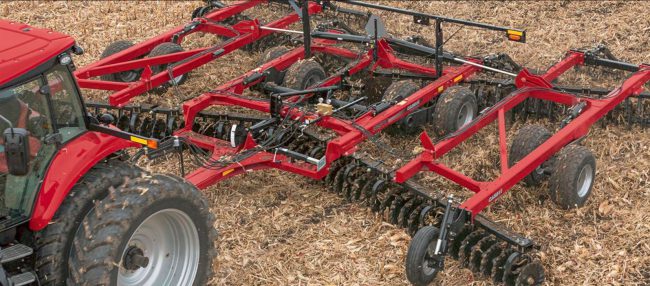
In North America during the 70s and 80s, a series of ideas and instruction emerged that were intended to improve soil health, reduce soil erosion and compaction, and improve water penetration. But there has never been an established standard within the industry that defines this particular tillage practice. As a result, there have been numerous equipment variances over the years that have been dictated by different manufacturers and for different reasons.
Wikipedia defines vertical tillage as follows:
With varying degrees of soil movement, it aims to not invert the soil and keep residue on the surface where it protects the soil. It usually includes small forward-facing discs that limit soil inversion and slices the residue for faster decomposition and to get a seeder or planter into the heavy residue-laden fields. Many times it also includes a deep ripping tool for breaking up hard pans and compaction created from traditional tillage implements and heavy equipment like large tractors and combine harvesters.
The benefits to vertical tillage are less compaction, faster field tillage speeds, less expense, better handling of heavy residue, soil warming, water runoff and erosion reduction, diminished chemical weed control measures, and seeding into wet soils.
15 of 24 manufacturers gave their input on this subject when invited by farm-equipment.com a few years ago. They offered their definition of vertical tillage as well as what they considered vertical tillage discrepancies. North American equipment producers have presented a number of approaches to vertical tillage – different blades on a variety of gang angles, higher operating speeds, adding leveling tools such as baskets and harrows, and “resetting” the soil at various depths. Some are even building machines that will do more than one thing.
So, who’s right? It appears as though all of these companies understand the basic intentions behind vertical tillage, but because there are so many points of view resulting in different types of equipment, it would be wise to do your homework. Find out what’s best for your operation.
-Terry Olson, Titan Machinery
Resources:
https://en.wikipedia.org/wiki/Vertical_tillage
https://www.farm-equipment.com/articles/14479-what-is-vertical-tillage-anyway